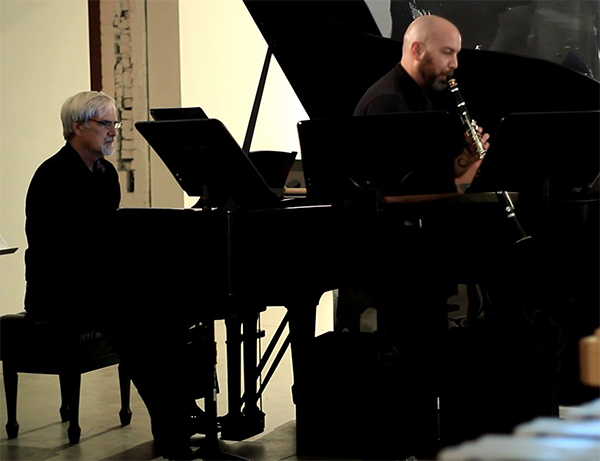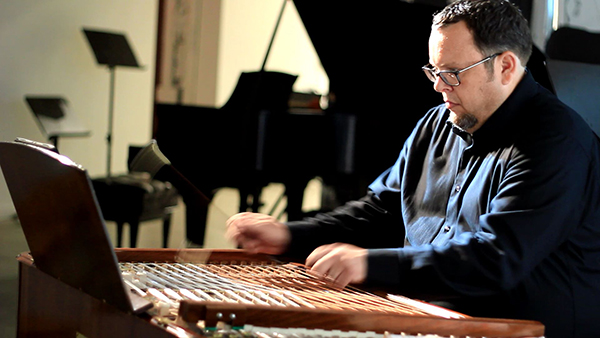by Nicholas Stevens

The concert on Friday, September 6 found audience members seated near the entrance and the musicians set up where a hallway opens into a larger gallery space — unusual for this venue but necessary due to an installation, and mostly unproblematic for sight and sound. Artistic director Timothy Beyer greeted listeners with characteristic good cheer. No Exit proves itself in performance, with no excessive solemnity required.

Adonai Henderson, a composer studying at Cleveland State University, drew inspiration from Africa and its diasporic legacies in writing ngoma, a solo percussion piece busy enough to simulate a whole ensemble. Luke Rinderknecht tapped and hammered at a set of conga drums, thwacking rims for emphasis. It’s a testament to both Henderson’s and Rinderknecht’s sharp senses of pacing that the interlocking patterns of the opening led to the explosive climax with simmering inexorability.

Sean Parks, another Cleveland State composition student, contributed Species Plantarum, Liber II, named for a 1753 botanical treatise. The first movement, inspired by a Tanzanian herb, moves in blips and oozes. The second, titled after a woody shrub, conjures the plant’s texture through the rasp of brushes on a snare drum. The third began with a lovely duet for violinist Cara Tweed and cellist Nick Diodore, interrupted by insistent cries from Sean Gabriel’s piccolo. The piece’s most ear-catching textures come in the fourth, which incorporates switched-on vibraphone, alto flute, and cello, with some well-timed tongue slaps for clarinet. The fifth and longest movement echoed the literal opening-out of the performance space into the gallery behind.

Englander returned for a solo encore, the final movement of György Kurtág’s Splinters. Blossoming into knotty chords, Englander’s stutters and strokes showcased the almost magical capabilities of the seldom-heard instrument, which, in a city as influenced by Eastern European cultures as Cleveland, could well find more of a foothold here. Let’s hope so.
Published on ClevelandClassical.com September 23, 2019.
Click here for a printable copy of this article



